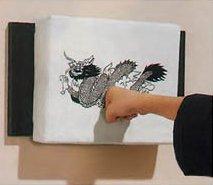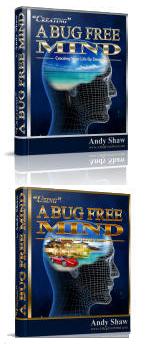 Karate Depot have asked me to review a makiwara (striking board) for them. But first, I would like to talk about what makawara training is actually trying to achieve as it not quite what most people imagine.
Karate Depot have asked me to review a makiwara (striking board) for them. But first, I would like to talk about what makawara training is actually trying to achieve as it not quite what most people imagine.
Personally, I like makawara’s. Some people argue that as they have so little give in them, your punch/strike has to stop after impact, rather than going all the way through the target - as you might do in a real combat situation. Therefore (it is argued) you are training yourself to “stop short”.
I personally believe that if you can slam your fist very hard into a target that barely gives and not damage or hurt yourself, then you have no fear of whatever you hit at all. You also develop so much impact that you don’t have to punch too deep to do damage. Besides you can practice punching/stiking deep on other pieces of equipment, that is not what the makawara is all about.
Some also argue that it is a stationary target and therefore less functional than focus mitts which obviously can move about. I’ll come back to this point shortly.
Although many see the makawawa as a method to harden hands, especially knuckles, Gichin Funakoshi says that the main point of using a makawawa is to learn correct alignment of the body when striking. Harding knuckles etc is secondary. Delivery of a good technique (be-it Karate or any other style) depends heavily on correct alignment of the body’s skeletal system. This in turn should allows you to become more and more relaxed in your technique as you advance through the grades.
How does correct skeletal alignment enable you to become more relaxed and why is this useful?
Firstly, correct bone/joint alignment absorbs the reaction created by the impact of your strike, transfers it to the ground, and then effectively bounces it back into the target again. With incorrect alignment, that part of the body will collapse and absorb much of this “impact reaction”.
This is the single most important function of the makawara, to weed out the bodies incorrect alignments and correct them.
This is best done with a training device that has little give in it (like a makawara). Focus mitts are better for accuracy training and for training reactions to a moving target, but they do not offer enough resistance to allow you to weed your incorrect alignments within your body. Neither training device (makawara or focus mitts) are superior to the other, they simply serve different functions.
As low grades, we can use a lot muscular strength to support our skeletal structure and stop it collapsing if there is any weakness (in the form of miss-alignments). However, as we progress, the alignment of the skeletal structure improves and can absorb the “impact reaction” with less support from the muscles. As we need less & less muscular support we can become much more relaxed. This in turn enables us to move faster, conserve energy and actually do more damage with less effort!
This really is one of the biggest keys to combat side of martial arts.
This is why Tai Chi is considered an advanced martial art. It is something that martial artists progress to, after a “harder” style has already taught them good skeletal structure. It is not a martial art to start with (unless you are only interested in health and well being, which is of course perfectly acceptable).
The slow relaxed movements of Tai Chi are partly to teach you to use your ki/chi (internal energy) which is of course a controversial subject that not everybody will agree on. However, on a more scientific level, the slow deliberate moves of Tai Chi do teach good skeletal alignment and good posture. Doing movements slowly without correct alignment and posture, you will be more likely to loose your balance than if you do it fast.
Tai Chi is therefore (on some levels at least), a continuation of the learning alignment and posture that starts with the makawara, but taken to a much higher level. I personally think that Tai Chi is much more than this, but this one aspect of it.
Anyway, this brings us back to the makawara and hopefully you’ll have a better idea of its deeper purpose and benefits now. The makawawa was traditionally a bail of straw, tied to a post set solidly into the ground. This is not aways practical today. However, you can get wall mounted versions like the Deluxe Makawara Board which I’ve been asked to review.
I found it very good. It can take a lot of punishment and is hard wearing. It’s also quite convenient as you put it up almost anywhere that you have a solid wall. As it can’t flex (like the traditional wooden post), it has a little bit of give in from the hard foam under the canvas cover. This foam does eventually get a little bit compressed from continuous blows, so I would suggest trying to strike different parts rather than just hitting the centre each time. This particular makawara is a bit larger than most others, so it does allow you to move your point of impact around about a bit. A good addition to any traditional martial artists training regime.




